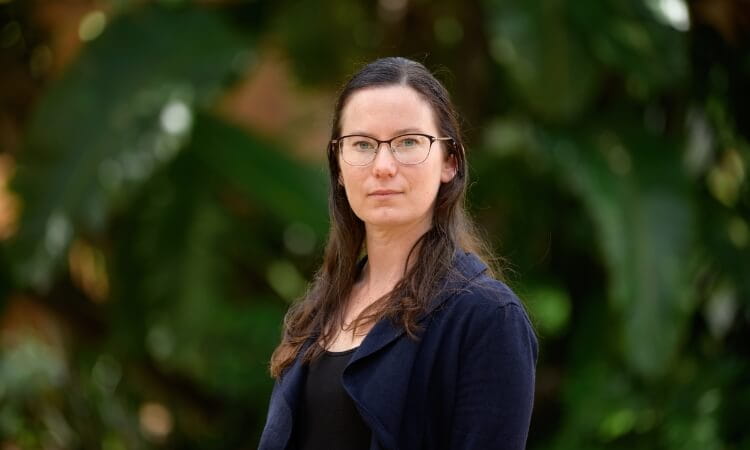People in major cities more likely to develop dementia, study finds
3 min read
22 Nov 2023

Australians who crave city life could be putting themselves at a greater risk of suffering from dementia.
City slickers are 1.12 times more likely to develop the serious brain disorder compared to their regional counterparts, new research by the University of Southern Queensland has found.
The study published in PLOS One was conducted by PhD student Rezwanul Haque using the latest available data from the Survey of Disability, Ageing and Carers (SDAC), a nationally representative database collected by the Australian Bureau of Statistics (ABS) about the health of people in Australia.
The SDAC contains information about individuals with disabilities, people who have long-term health conditions and older adults.
This is the first study to establish a link between dementia risk and geographic remoteness from an Australian perspective. Moreover, the study also explores the recent changes in dementia prevalence.
It found dementia rates across the population increased from 0.84 per cent to 0.89 per cent between 2015 and 2018.
For people living in major cities, the prevalence was 5,590 per 100,000 in 2018 – an 11 per cent increase from 2015. Conversely, there was a 21 per cent decrease in dementia among people living in outer regional and remote areas during the same period.
Dementia is a significant health problem among older Australians, with one in 20 people aged over 65 nationally having dementia according to the SDAC dataset.
Mr Haque said the study highlighted the increasing health threat and that without a breakthrough, the number of Australians with dementia is expected to increase by more than double by 2058, according to the Australian Institute of Health and Welfare.
“There is currently no cure for any form of dementia,” he said.
“Australia’s ageing population is expected to grow even older in the coming decades, which will drive up dementia rates even more and put more pressure on families, health care systems and communities.”
The strength of the research was the use of the SDAC dataset which included data on dementia prevalence collected from both households and cared accommodation, whereas previous studies either used data that didn’t present geographical differences or were conducted using routinely collected aged care institutional data.
Diabetes, high blood pressure, obesity, undernutrition, depression and brain injuries have increased over time in Australia, which may all be a factor in the rise in dementia rates.
However, Mr Haque’s supervisor and co-author Professor Khorshed Alam said environmental factors could be the reason why people in major cities are at greater risk of developing dementia.
“Earlier research identified chronic noise exposure, air pollution and a paucity of green space as probable risk factors for cognition reduction, which are more prevalent in metropolitan areas,” he said.
Professor Alam said policymakers should take note of the findings to come up with solutions to deal with the disease.
“Green spaces and increasing the number of urban trees could lower dementia risk by encouraging physical activity, social interaction, and network building while simultaneously reducing exposure to air pollution,” he said.
“Councils could develop standalone urban forest strategies or integrate the conservation of urban forests into municipal strategic planning statements to ensure that residents and communities have healthier environments.
“Additionally, state and territory governments could provide additional funding for vital services such as memory clinics, geriatric assessments and home visits for older adults, services for older adults’ mental health, hospital-to-residential aged care transition services, and assistance for those who are exhibiting behavioural and psychological signs of dementia.”
The study ‘Changes in the prevalence of dementia in Australia and its association with geographic remoteness’ was co-authored with Professor Christine Neville and Professor Jeff Gow from the University of Southern Queensland.
City slickers are 1.12 times more likely to develop the serious brain disorder compared to their regional counterparts, new research by the University of Southern Queensland has found.
The study published in PLOS One was conducted by PhD student Rezwanul Haque using the latest available data from the Survey of Disability, Ageing and Carers (SDAC), a nationally representative database collected by the Australian Bureau of Statistics (ABS) about the health of people in Australia.
The SDAC contains information about individuals with disabilities, people who have long-term health conditions and older adults.
This is the first study to establish a link between dementia risk and geographic remoteness from an Australian perspective. Moreover, the study also explores the recent changes in dementia prevalence.
It found dementia rates across the population increased from 0.84 per cent to 0.89 per cent between 2015 and 2018.
For people living in major cities, the prevalence was 5,590 per 100,000 in 2018 – an 11 per cent increase from 2015. Conversely, there was a 21 per cent decrease in dementia among people living in outer regional and remote areas during the same period.
Dementia is a significant health problem among older Australians, with one in 20 people aged over 65 nationally having dementia according to the SDAC dataset.
Mr Haque said the study highlighted the increasing health threat and that without a breakthrough, the number of Australians with dementia is expected to increase by more than double by 2058, according to the Australian Institute of Health and Welfare.
“There is currently no cure for any form of dementia,” he said.
“Australia’s ageing population is expected to grow even older in the coming decades, which will drive up dementia rates even more and put more pressure on families, health care systems and communities.”
The strength of the research was the use of the SDAC dataset which included data on dementia prevalence collected from both households and cared accommodation, whereas previous studies either used data that didn’t present geographical differences or were conducted using routinely collected aged care institutional data.
Diabetes, high blood pressure, obesity, undernutrition, depression and brain injuries have increased over time in Australia, which may all be a factor in the rise in dementia rates.
However, Mr Haque’s supervisor and co-author Professor Khorshed Alam said environmental factors could be the reason why people in major cities are at greater risk of developing dementia.
“Earlier research identified chronic noise exposure, air pollution and a paucity of green space as probable risk factors for cognition reduction, which are more prevalent in metropolitan areas,” he said.
Professor Alam said policymakers should take note of the findings to come up with solutions to deal with the disease.
“Green spaces and increasing the number of urban trees could lower dementia risk by encouraging physical activity, social interaction, and network building while simultaneously reducing exposure to air pollution,” he said.
“Councils could develop standalone urban forest strategies or integrate the conservation of urban forests into municipal strategic planning statements to ensure that residents and communities have healthier environments.
“Additionally, state and territory governments could provide additional funding for vital services such as memory clinics, geriatric assessments and home visits for older adults, services for older adults’ mental health, hospital-to-residential aged care transition services, and assistance for those who are exhibiting behavioural and psychological signs of dementia.”
The study ‘Changes in the prevalence of dementia in Australia and its association with geographic remoteness’ was co-authored with Professor Christine Neville and Professor Jeff Gow from the University of Southern Queensland.
Related news
2 min read
10 Dec 2025
2 min read
8 Dec 2025
1 min read
19 Nov 2025
Tags


